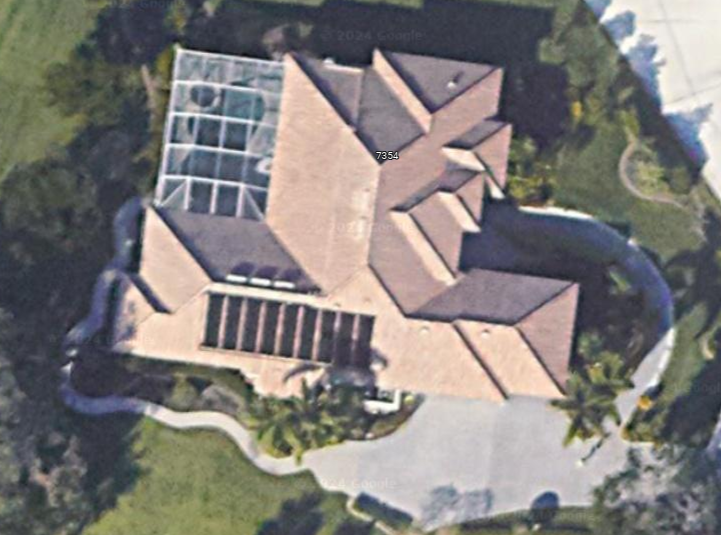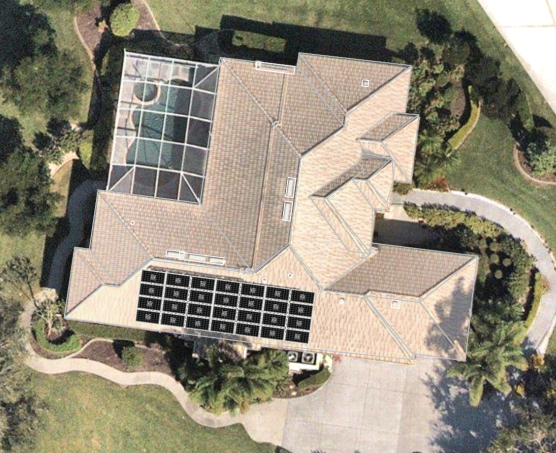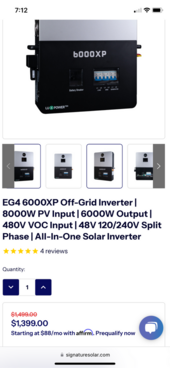I’m new to designing solar power systems, so I am hopeful to draw on the combined experience and wisdom of the group to review my proposed system design. My parents live in Sarasota, FL about 4 miles inland and are looking into installing grid attached solar and battery on their house.
Most of the motivation is to provide for a means for backup power during the numerous outages they experience, and, if necessary, provide backup power for days after a hurricane that has wiped out the grid in the area. Their house is of relatively recent build, with concrete walls, and they recently replaced all doors and windows with hurricane rated ones. Due to my father’s health issues, they cannot move or evacuate during such an event and must stay and ride it out (as they did with hurricane Ian in 2022, lost power for 30 hours, the house had only minor damage). Thus they want some form of emergency power.
They also suffer frequent and infuriating blink outs of power, just long enough to reset all the clocks and computers that aren’t on UPS units. They have UPS all over the house, about 12 of them, and the battery replacement chores and constant beeping when their batteries fail is annoying. Thus a system which has a very fast transfer time would be highly desirable so they can reduce or eliminate the UPS units all over the house.
Further, there is a general interest in generating their own power and being energy neutral if possible. Presently, they can get net metering with the utility, but that is under legislative threat. A system which is adaptable to the changing grid attach rules would be good.
They contacted a number of solar companies. The bids they have gotten seem outrageous to me, and/or include ridiculous lease agreements that turn them into indentured servants. The equipment being proposed won’t do things the way I think things should be done, for example, no solar power if the grid is down, which seems stupid.
So I am stepping in to see if I can design a system that will work for them, be lower cost, and be better performing. A design goal is to make the installation as simple as possible as well, so that some of it may be done ourselves. Having done a fair amount of research, I’ve come up with a system that I feel like does the job very well, but I’ve never done this before, so I might be wrong or miss details.
The inverter I have selected is the EG4 18KPV which looks like it does everything we need all in one box. We would couple that with batteries, either the EG4 Powerpro, or perhaps some server rack batteries instead. The solar panels would be about 400 watt units and a system size of about 12 KW. The other bids said we needed about 17.7 MWH generation to be neutral and a 11.3 KW system would do that.
Existing Service and Conditions
This is a retrofit installation for a house built about 30 years ago that only has grid power currently. The electric service is an outside meter that feeds 200 amp service to a QO main panel. The main panel has most of the heavy current users such as pool pump, pool heat pump, irrigation pump, 3.5 ton AC, 2 ton AC, dryer, stove, and heat pump water heater. There are a few normal 120 VAC branch circuits serving outlets and lights. I believe the main panel has 225 amp bus bars with a 200 amp main breaker.
There is an auxiliary panel that feeds from a main panel breaker and has the majority of the 120 VAC circuits that serve lights, outlets, etc.
On average they use about 1500 KWH per month. A significant part of that is the pool pump and AC. They use more power in the summer than in the winter due mainly to AC use.
They have a generously sized southern roof at about 20 degree angle (latitude 27 degrees), clay tile, with clear view of the sky. They used to have pool solar heater panels, but they proved problematic (always developing leaks) so those got removed but are visible in this picture:

To give some scale, the pool solar array was 13 x 37 ft, the PV solar array can be larger. There are a clump of palm trees that shade the panels (evident in the above photo from late afternoon) but those will be removed. In the very late evening, a tree to the left does provide some shade, but the sun is quite far down by that time so likely not a major factor in energy production. The bids we got estimated the solar array would have about 4.3 “effective hours” per day. That is the yearly energy produced divided by 365 days divided by the array power rating. Specifically, 17,774 KWH per year with an 11.34 KW array. In my assessment, this seemed like a very good array site with high production per panel.
Here is one proposal array depiction using 28 panels, 11.48 KW system size. So there is plenty of roof available and the angle is quite good being only 7 degrees from the latitude and the roof within 7 degrees of perfectly south. The grid meter and power entrance is just under the lower right corner of this array, so the wiring will be short and easy.

(Continued on next post)
Most of the motivation is to provide for a means for backup power during the numerous outages they experience, and, if necessary, provide backup power for days after a hurricane that has wiped out the grid in the area. Their house is of relatively recent build, with concrete walls, and they recently replaced all doors and windows with hurricane rated ones. Due to my father’s health issues, they cannot move or evacuate during such an event and must stay and ride it out (as they did with hurricane Ian in 2022, lost power for 30 hours, the house had only minor damage). Thus they want some form of emergency power.
They also suffer frequent and infuriating blink outs of power, just long enough to reset all the clocks and computers that aren’t on UPS units. They have UPS all over the house, about 12 of them, and the battery replacement chores and constant beeping when their batteries fail is annoying. Thus a system which has a very fast transfer time would be highly desirable so they can reduce or eliminate the UPS units all over the house.
Further, there is a general interest in generating their own power and being energy neutral if possible. Presently, they can get net metering with the utility, but that is under legislative threat. A system which is adaptable to the changing grid attach rules would be good.
They contacted a number of solar companies. The bids they have gotten seem outrageous to me, and/or include ridiculous lease agreements that turn them into indentured servants. The equipment being proposed won’t do things the way I think things should be done, for example, no solar power if the grid is down, which seems stupid.
So I am stepping in to see if I can design a system that will work for them, be lower cost, and be better performing. A design goal is to make the installation as simple as possible as well, so that some of it may be done ourselves. Having done a fair amount of research, I’ve come up with a system that I feel like does the job very well, but I’ve never done this before, so I might be wrong or miss details.
The inverter I have selected is the EG4 18KPV which looks like it does everything we need all in one box. We would couple that with batteries, either the EG4 Powerpro, or perhaps some server rack batteries instead. The solar panels would be about 400 watt units and a system size of about 12 KW. The other bids said we needed about 17.7 MWH generation to be neutral and a 11.3 KW system would do that.
Existing Service and Conditions
This is a retrofit installation for a house built about 30 years ago that only has grid power currently. The electric service is an outside meter that feeds 200 amp service to a QO main panel. The main panel has most of the heavy current users such as pool pump, pool heat pump, irrigation pump, 3.5 ton AC, 2 ton AC, dryer, stove, and heat pump water heater. There are a few normal 120 VAC branch circuits serving outlets and lights. I believe the main panel has 225 amp bus bars with a 200 amp main breaker.
There is an auxiliary panel that feeds from a main panel breaker and has the majority of the 120 VAC circuits that serve lights, outlets, etc.
On average they use about 1500 KWH per month. A significant part of that is the pool pump and AC. They use more power in the summer than in the winter due mainly to AC use.
They have a generously sized southern roof at about 20 degree angle (latitude 27 degrees), clay tile, with clear view of the sky. They used to have pool solar heater panels, but they proved problematic (always developing leaks) so those got removed but are visible in this picture:
To give some scale, the pool solar array was 13 x 37 ft, the PV solar array can be larger. There are a clump of palm trees that shade the panels (evident in the above photo from late afternoon) but those will be removed. In the very late evening, a tree to the left does provide some shade, but the sun is quite far down by that time so likely not a major factor in energy production. The bids we got estimated the solar array would have about 4.3 “effective hours” per day. That is the yearly energy produced divided by 365 days divided by the array power rating. Specifically, 17,774 KWH per year with an 11.34 KW array. In my assessment, this seemed like a very good array site with high production per panel.
Here is one proposal array depiction using 28 panels, 11.48 KW system size. So there is plenty of roof available and the angle is quite good being only 7 degrees from the latitude and the roof within 7 degrees of perfectly south. The grid meter and power entrance is just under the lower right corner of this array, so the wiring will be short and easy.
(Continued on next post)



